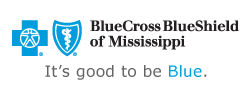Decode the Nutrition Label
Have you ever picked up a package at the supermarket and wondered what all those health claims mean? Or have you bought a product because it claimed to be healthy? Marketing companies spend a lot of money on packaging to encourage us to buy their product. But don't be fooled by their health claims. Here are some common nutrition terms and what they really mean:
- All-natural - The Food and Drug Administration (FDA) does not define the words "all-natural" or "natural." This means that there is no regulation when using these terms, and food companies can interpret for themselves what is "natural."
- Multigrain - Products labeled "multigrain" mean they are made with multiple types of grains. They are not necessarily whole-grains. Read the ingredient list on the package to know if it is a whole-grain; the first ingredient should read "whole-grain" or "whole-wheat."
- Sugar-free - A product labeled "sugar-free" contains less than 0.5 g of sugar per serving. Note that many sugar-free products are made with sugar alcohols (such as xylitol or sorbitol) which can upset the digestive system.
- Zero trans fat - Food companies can label a product as having "zero trans fat" if it contains less that 0.5 g per serving. This means that a product can actually contain trans fat. To know if your food contains trans fat, look for the ingredient "partially hydrogenated fats and oils." If a food is made with this ingredient, it contains trans fat.
- Made with real fruit - Products labeled "made with real fruit" usually contain very small amounts of fruit and are often made with fruit juice from concentrate.
- Organic - Look for the USDA certified organic logo. This means that it is free of synthetic chemicals, antibiotics or hormones.
- Low-fat - Contains 3g of fat or less per serving.
- Low sodium - Contains 140 mg or less per serving of sodium.
- Good source of - Contains 10 percent or more of the daily value for a particular nutrient.
- Reduced - Contains 25 percent less of a specific nutrient than the original product. For example, if the label reads "reduced fat" it contains 25 percent less fat the original.
- Sodium <140 mg - Find products that have less than 140 mg per serving. Foods such as lunch meats and cheeses, frozen prepared meals, as well as other processed foods, are high in sodium. Limit your intake of these foods and increase your intake of fresh fruits and vegetables which are naturally low in sodium.
- Saturated fat <2g - Meat and meat products are generally higher in fat and saturated fat. A high intake of saturated fat can increase your risk of heart disease. Choose lean meats, such as chicken or fish, which are lower in fat and saturated fat than red meats.
- Fiber >3g - Fiber helps with digestion and can help prevent heart disease. Whole-grain products such as whole-grain breads, cereals, pastas and oats have more fiber than grains that are not whole-grain.
When reading food nutrition labels, aim for the following amounts per serving:
Understanding the nutrition label is an important part of managing your health and eating a healthy diet. We've also included some additional tips for using the nutrition label to choose healthy snacks and to help you make informed decisions about what you eat. Be healthy!




 Women's Health
Women's Health Eat Healthy
Eat Healthy Exercise
Exercise Health & Wellness Articles
Health & Wellness Articles